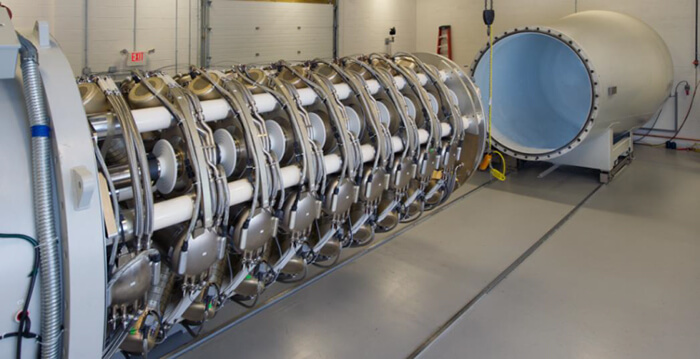The School of Physics and Astronomy is home to world-leading facilities. Our facilities support research and teaching across a diverse range of specialisms.
 Image: The Neutron Therapeutics proton accelerator used for the generation of the neutrons
Image: The Neutron Therapeutics proton accelerator used for the generation of the neutrons
A 200 m2 of open-plan cleanroom space designed to accommodate work in three main areas: detector development for the High-Luminosity upgrade of the LHC (HL-LHC), generic R&D on semiconductor detectors for future international collider experiments, and medical application of particle physics technology. The BILPA facilities contribute to both the delivery of STFC science, and to the development of applications of STFC technologies in other spheres of academia and in industry.
Brought over from America 15 years ago, it delivers a flexible range of ions and energies. It is capable of accelerating hydrogen (protons and deuterons) and helium (helium-3 and helium-4) with high intensities to energies at which it’s possible to perform nuclear reactions.
The Positron Imaging Centre is home to the technique of Positron Emission Particle Tracking (PEPT). The Centre caters to a wide variety of users; the study of flows and measures of blending/mixing are two of the more common experiments performed, however PEPT can be useful in many more applications.
Operated by the Solar and Stellar Physics Group, this world-wide network of six remotely operated ground-based telescopes provides round-the-clock monitoring of the globally coherent, core-penetrating modes of oscillation of the Sun.
New facility coming to campus. The High Flux Accelerator-Driven Neutron Facility will support the study of neutron interactions in materials for the nuclear sector, ranging from fission to fusion.